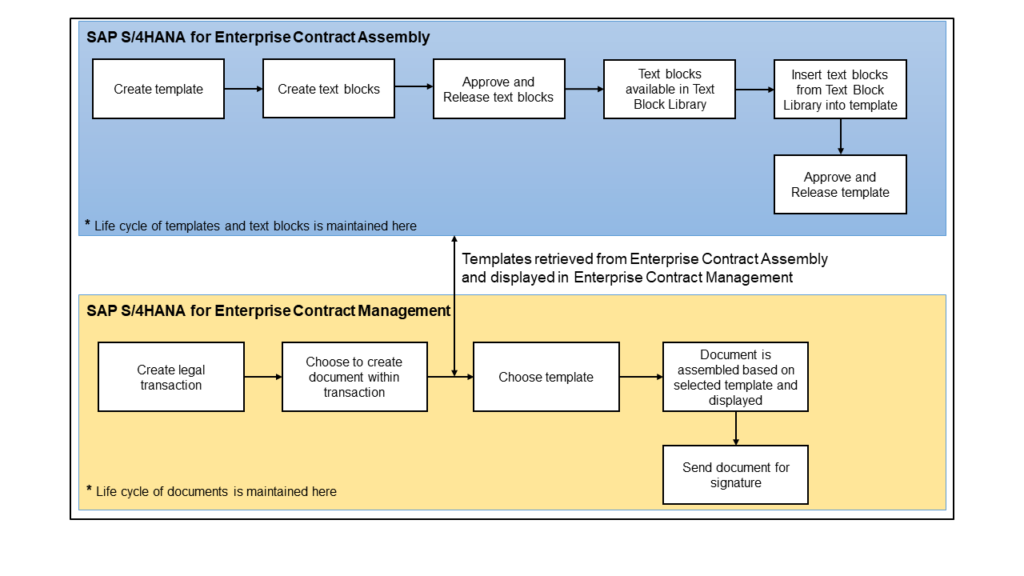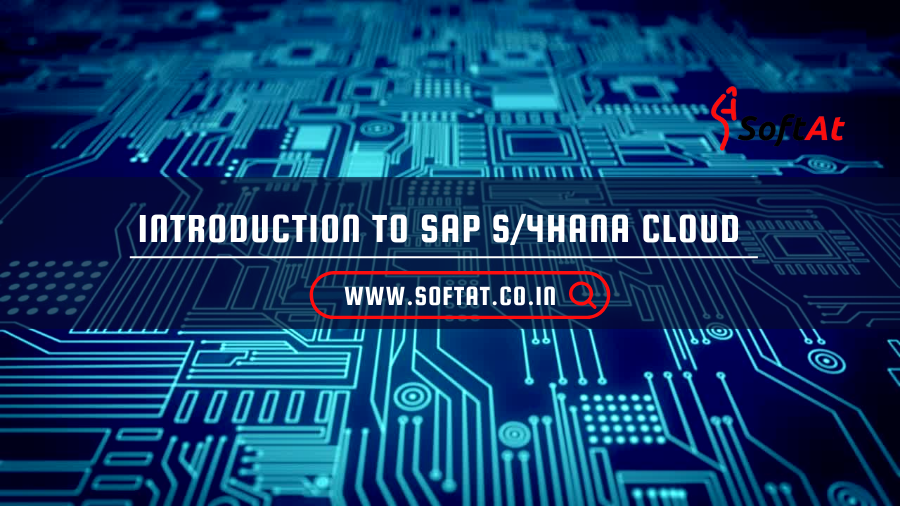| I. Introduction to SAP S/4HANA Cloud | |
| II. Advantages of Transitioning to S/4HANA Cloud | |
| III. Key Features and Capabilities | |
| IV. Navigating the User Interface | |
| V. Transactional Processes in S/4HANA Cloud | |
| VI. Streamlining Operations with Intelligent Automation | |
| VII. Security Measures in S/4HANA Cloud | |
| VIII. Integration with Other SAP Solutions | |
| IX. Customization and Personalization | |
| X. Training and Support Resources | |
| XI. Case Studies: Real-world Success Stories | |
| XII. Challenges and Solutions | |
| XIII. Future Trends in S/4HANA Cloud | |
| XIV. FAQs – Addressing Common Queries | |
| XV. Conclusion |
Introduction to SAP S/4HANA Cloud
Sure, SAP S/4HANA Cloud is a cloud-based Enterprise Resource Planning (ERP) suite developed by SAP. It integrates various business functions and processes, such as finance, supply chain, and human resources, into a unified platform. The system is designed to provide real-time insights, streamline operations, and offer a modern user experience through its intuitive interface. As a cloud solution, it enables organizations to access their ERP system over the internet, eliminating the need for on-premise infrastructure and allowing for scalability and continuous innovation.
As the “wise ERP arrangement of the new age,” the SAP S/4HANA Cloud was first sent off in February 2017. With an ERP framework as a cloud-based programming variant, the supplier offers organizations an answer that doesn’t rely upon their own assets like interior equipment, data sets, and IT skill.
How to Learn SAP S4 HANA and Boost Your Career

Clients can practically interface their specializations and utilitarian regions, digitize their business cycles, and along these lines adjust all the more rapidly to new improvement patterns.
The SAP S/4HANA Cloud runs on the SAP HANA in-memory data set. This superior presentation examination application, which before the SAP cloud arrangement was just accessible in mix with different equipment, utilizes man-made reasoning to dissect a lot of information, in addition to other things.
The in-memory innovation of the turn of events and combination stage permits clients to get to their information quicker and “progressively” to speed up processes. With the SAP Cloud Stage, this additionally works practically.
Advantages of Transitioning to S/4HANA Cloud
Transitioning to S/4HANA Cloud offers a myriad of advantages, including enhanced agility, real-time analytics, and simplified business processes. Learn why businesses are making the shift and reaping the benefits.

- Scalability
- Cost savings
- Flexibility
- Improved security
- Fast implementation
- Maintenance and support
- Fast innovation cycle
- Flexible subscription
- Increase efficiency
SAP S4 Hana Interview Questions
Key Features and Capabilities
Delve into the key features and capabilities that set SAP S/4HANA Cloud apart, from its in-memory database to advanced analytics and machine learning capabilities.
- Business process insight: Permits organizations to be spry and adaptable, and pursue speedy choices
- Constant development: Empowers persistent bookkeeping with one wellspring of truth
- Decline in execution cost: Permits associations to oversee resource related cost, chance, and execution
- Keep the control: Permits clients to deal with the speed of progress and pick cloud framework
- Run on your own norm: Permits clients to redo business cycles to their remarkable necessities
- Obtaining and acquisition: Gives close continuous experiences into authoritative spend, providers, and market data
Navigating the User Interface
The user interface (UI) for SAP S/4HANA Cloud is designed to be intuitive and easy to use. It’s based on SAP Fiori, which is an app-like interface that works on any device, including mobile, tablet, and web browser. The UI also includes:

- Personalized dashboards
- Role-based access
- Built-in analytics
- Screen Personas
- Highly configurable
- Has a lower implementation cost
- Requires no prior expertise
Transactional Processes in S/4HANA Cloud
SAP S/4HANA Cloud depends on in-memory innovation that can perform both logical and value-based processes. It’s intended to oversee a lot of information and tackle complex issues.
- Service ordersWhen a service order is released in SAP S/4HANA Cloud, a service call and the corresponding activities are automatically created in SAP Field Service Management.
- Financial postingsCloud processes the financial postings and sends confirmations for each document.
SAP S/4HANA Cloud likewise incorporates implanted investigation that permit clients to perform continuous examination on live value-based information. This is finished through:
- Virtual Information Models
- Prebuilt models
- Reports in view of SAP HANA Center Information Administrations
Streamlining Operations with Intelligent Automation
Intelligent automation (IA) smoothes out business activities that would have in any case required manual undertakings performed by people by consolidating man-made brainpower, mechanical cycle robotization, business process the board and other computerized advancements.
SAP S/4HANA Cloud offers a variety of security measures:
Encryption, Firewalls, Intrusion detection systems, Virus protection, Malware management, Threat and vulnerability management, Access control, Anonymization, Masking, Auditing.

SAP S/4HANA Cloud is hosted in SAP’s secure data centers. The cloud is also permanently monitored and secured.
Some ways to boost the security of SAP S/4HANA implementation include:
- Upgrading roles and authorizations
- Implementing the cloud application
- Managing user access and authentication
Integration with Other SAP Solutions
SAP connectors permit the joining of various applications and advances with SAP frameworks through open guidelines. The connectors are implies for specialized interoperability of SAP parts (written in ABAP or ABAP objects) and different parts (written in Java, C++, and Visual Fundamental, for instance).
Customization and Personalization
Customization and personalization are the two methods for fitting substance and elements to explicit client attributes. The principal distinction between the two is who rolls out the improvements:
–Customization
Clients physically make changes to a thing to address their issues. For instance, in web based business, customization could include picking various varieties or adding custom messages.
–Personalization
Organizations make or change a thing utilizing client information to address a singular’s issues. For instance, personalization could include making customized encounters in view of a client’s previous buys or perusing conduct.
Training and Support Resources
Empower your team with the right knowledge. Access training and support resources provided by SAP to ensure a smooth transition and ongoing success with S/4HANA Cloud.
FAQs – Addressing Common Queries
- Is S/4HANA Cloud suitable for small businesses?
- Yes, S/4HANA Cloud is designed to cater to businesses of all sizes, including small businesses. Its modular structure allows for scalability, enabling small businesses to adopt and benefit from specific modules that suit their needs and budget.
- What distinguishes S/4HANA Cloud from on-premise solutions?
- The primary distinction lies in the deployment model. S/4HANA Cloud is a cloud-based solution, offering the advantages of flexibility, accessibility, and automatic updates without the need for on-premise infrastructure. On the other hand, on-premise solutions are installed locally, providing more control over customization but requiring greater IT management.
- How does S/4HANA Cloud enhance business intelligence?
- S/4HANA Cloud leverages in-memory computing, providing real-time data processing and analytics. This enhances business intelligence by offering instant insights into key metrics, trends, and performance indicators. The system’s advanced analytics and machine learning capabilities further contribute to smarter decision-making.
- Are there industry-specific modules available in S/4HANA Cloud?
- Yes, S/4HANA Cloud offers industry-specific modules tailored to meet the unique needs of various sectors. These modules provide specialized functionalities and processes, ensuring that businesses in different industries can benefit from a solution that aligns with their specific requirements.
- What support does SAP provide during the migration to S/4HANA Cloud?
- SAP offers comprehensive support during the migration to S/4HANA Cloud. This includes documentation, training resources, and a dedicated support team to assist with the migration process. Additionally, SAP provides tools and services to facilitate a smooth transition, ensuring minimal disruption to business operations.
Conclusion
In conclusion, SAP S/4HANA Cloud stands as a transformative cloud-based ERP solution, offering businesses a modern and agile platform to streamline operations, gain real-time insights, and enhance overall efficiency. With features such as in-memory computing, intelligent automation, and industry-specific modules, it caters to diverse business needs. The user-friendly interface, coupled with comprehensive training and support resources from SAP, ensures a smooth transition for organizations of all sizes. As businesses continue to embrace the advantages of S/4HANA Cloud, its secure and scalable nature positions it as a key player in the future of ERP solutions.





